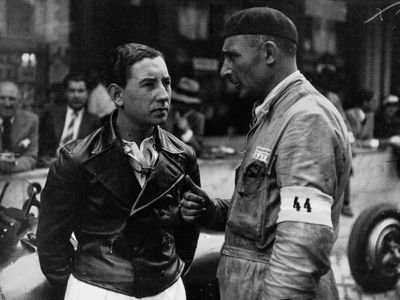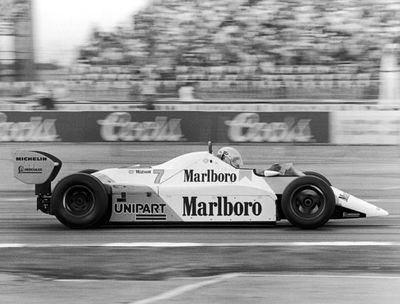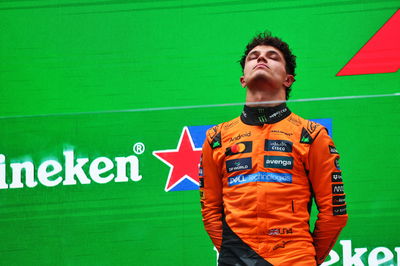Kate Walker: Guy Moll

Guy Moll
Years ago, asked to name the best drivers he'd encountered in his years in motorsport, Enzo Ferrari's list included a surprising - and often forgotten - pre-war grand prix racer: Guy Moll, who Ferrari called his "most sensational" foreign driver, and who he ranked alongside the likes of Tazio Nuvolari and Stirling Moss.
"A debutant," Ferrari recalled. "His name was Guy Moll and he was showing that he belonged to the small group of top drivers. It is true that Moll was not the first foreigner that drove for me, but I acknowledge that he was the most sensational one. That day Moll showed his champion style, established his personality as a driver and proved me right when choosing him for my team.
"Together with Moss," Ferrari said, "[Moll] was the only driver worthy of comparison with Nuvolari. In fact, he resembled Nuvolari in certain singular mental traits, in his aggressive spirit, in the calm assurance with which he drove and in the equanimity with which he was prepared to face death."
Born to a French father and Spanish mother in Algeria in 1910, Moll could technically lay claim to the title of single-seater racing's first African driver. Of wealthy European descent, he came of age in an era when car racing was one of those things gentlemen of means dabbled in, and he started racing a private Lorraine-Dietrich in races around Algeria, showing enough promise that he had attracted the attention of a European talent scout.
The early part of 1932 was spent honing his racecraft around north Africa, before Moll made his European debut at the 1932 Marseilles Grand Prix, finishing on the bottom step of the podium. On the second step? Tazio Nuvolari...
Having arrived in Europe in 1932 as a no-name racer, by 1933 Moll's name was one to watch, and the 22-year old delivered on his promise at that year's season-opening race in Pau, which was held in early February. Despite a freak snowstorm, race organisers decided to press ahead with the event, and the Algerian Moll - who had never seen snow before, never mind driven in it - took the lead and held it for much of the three-hour street race, eventually finishing in second.
Finishing in second would become something of a mantra for Moll that year. Regular podiums were a feature of his 1933 season, with that first grand prix win proving elusive. It was at the 1934 Monaco Grand Prix that Moll was finally able to break his duck, the race which was also his Scuderia Ferrari debut.
Moll was partner to France's Louis Chiron at Ferrari, and it was when he was running behind his team-mate - who was leading the race - that Moll was able to capitalise on Chiron's error, taking the lead of the race when the more experienced driver ran into the barriers at what was then the Station Hairpin.
His next victory - at Berlin's fearsome Avusrennen, with its 'Wall of Death' banking - demonstrated that Moll was as intelligent a racer as he was a naturally quick one, making the most of a clutch failure suffered by Hans Stuck in the dominant Auto Union to drive his own stream-lined Alfa Romeo to confident victory on a circuit where the 3.2-litre car should never have had a chance.
But Moll's promise was cut short all too soon, and the 24-year old died from his injuries following a crash at the 1934 Coppa Acerbo, in Pescara.
Enzo Ferrari paid apt tribute to his young driver: "With the stuff in him to become one of the greatest aces of all time, Moll was, unfortunately, a passing - if memorable - meteor in the motor racing firmament."











